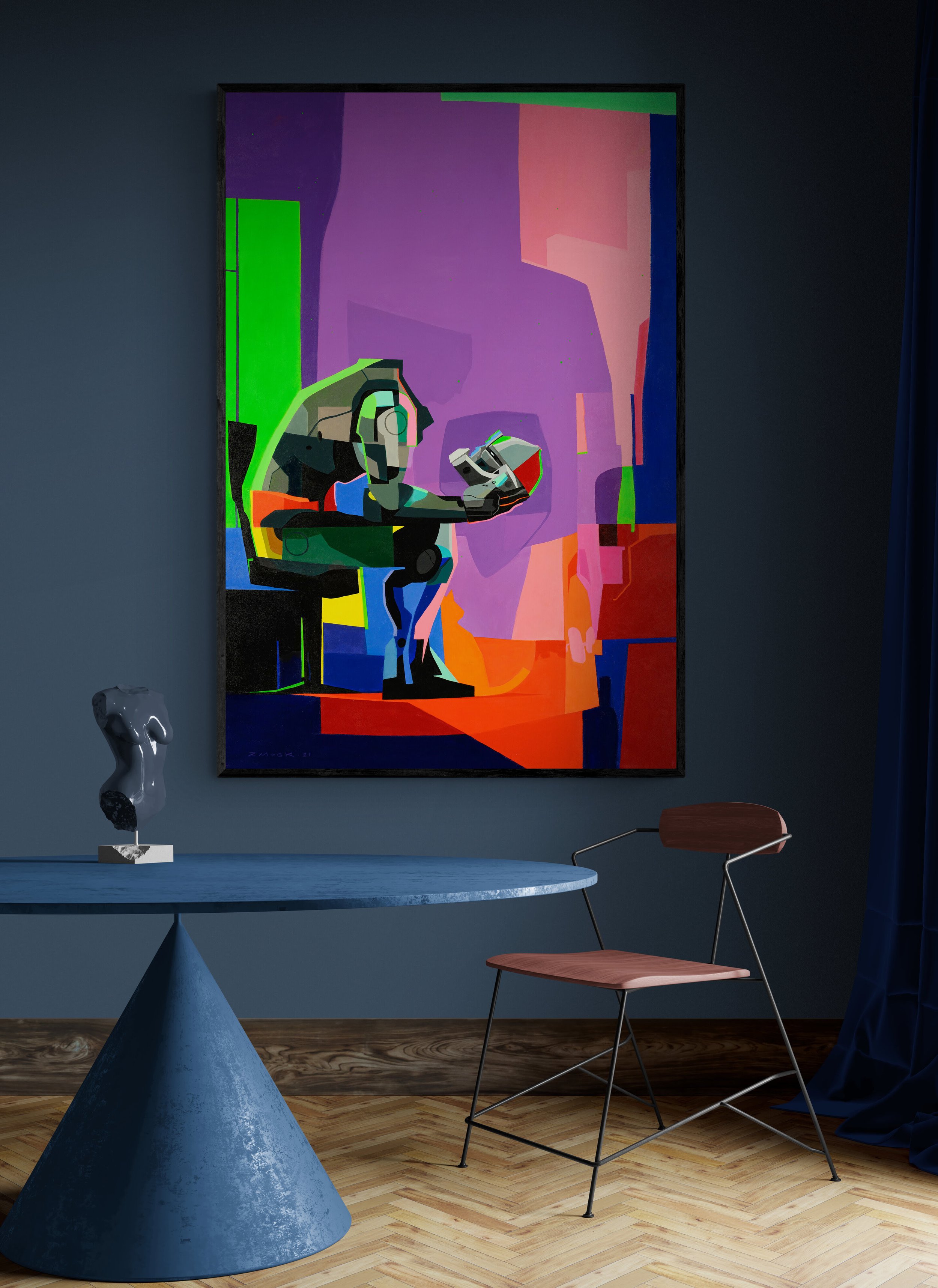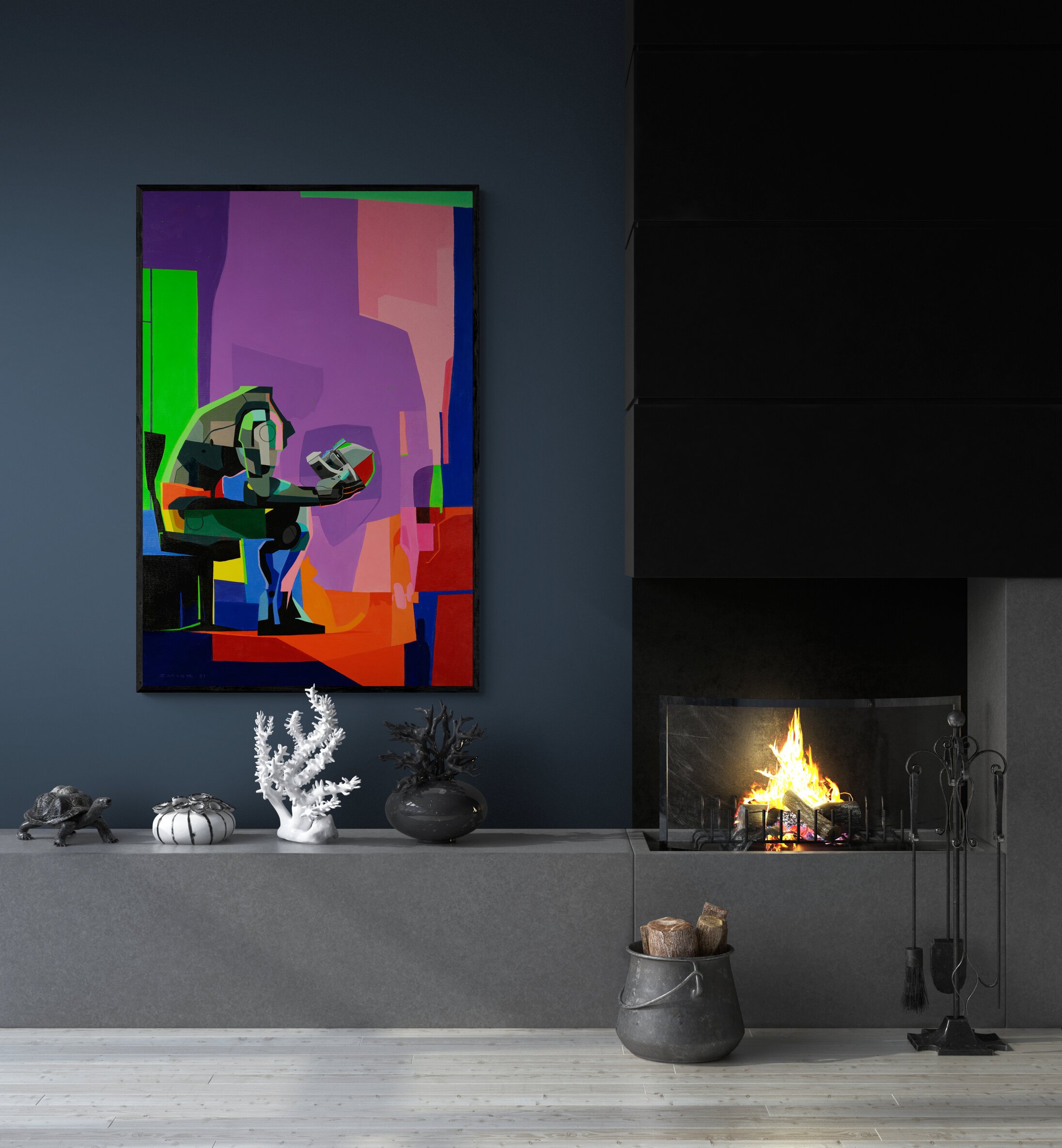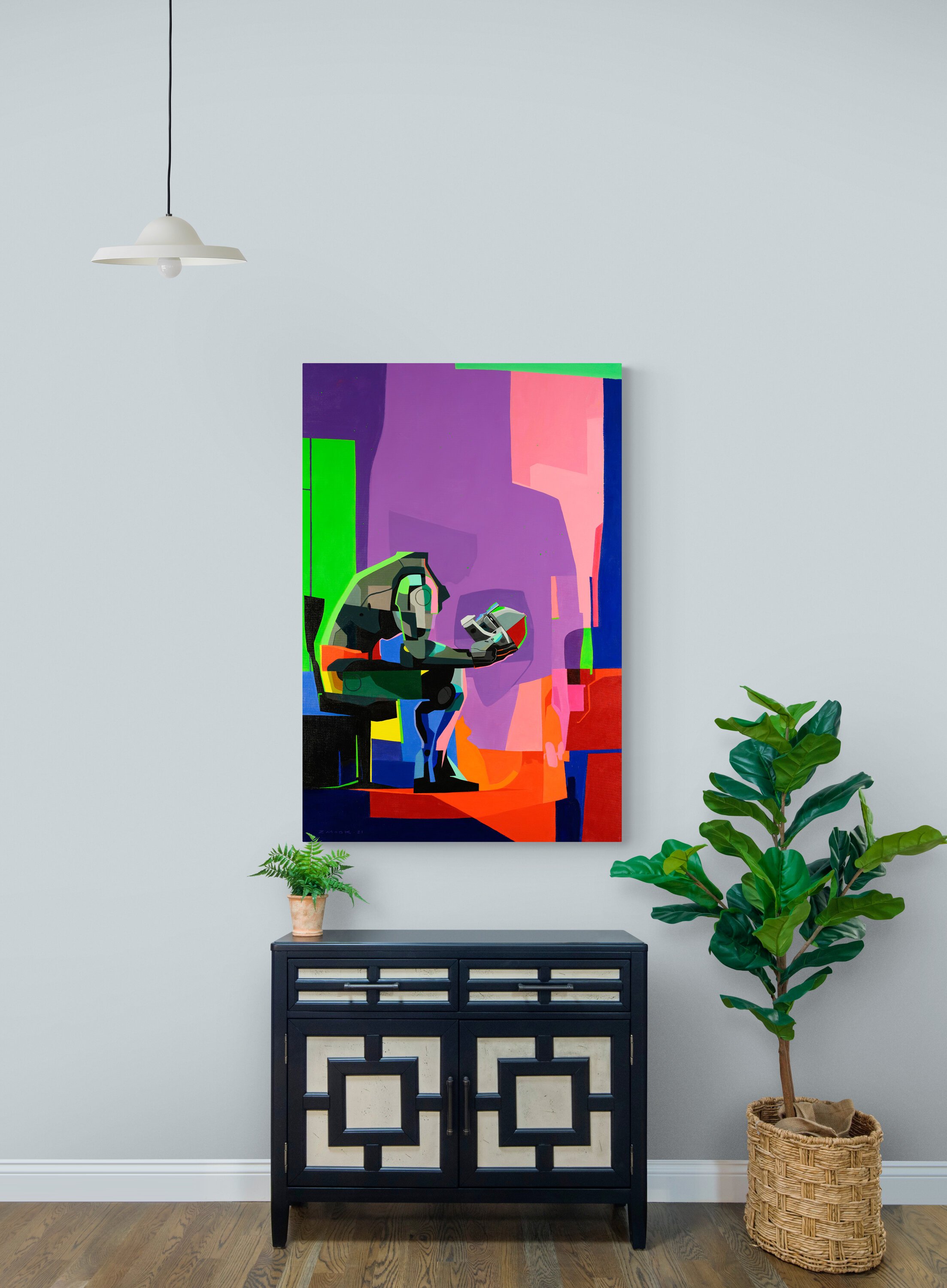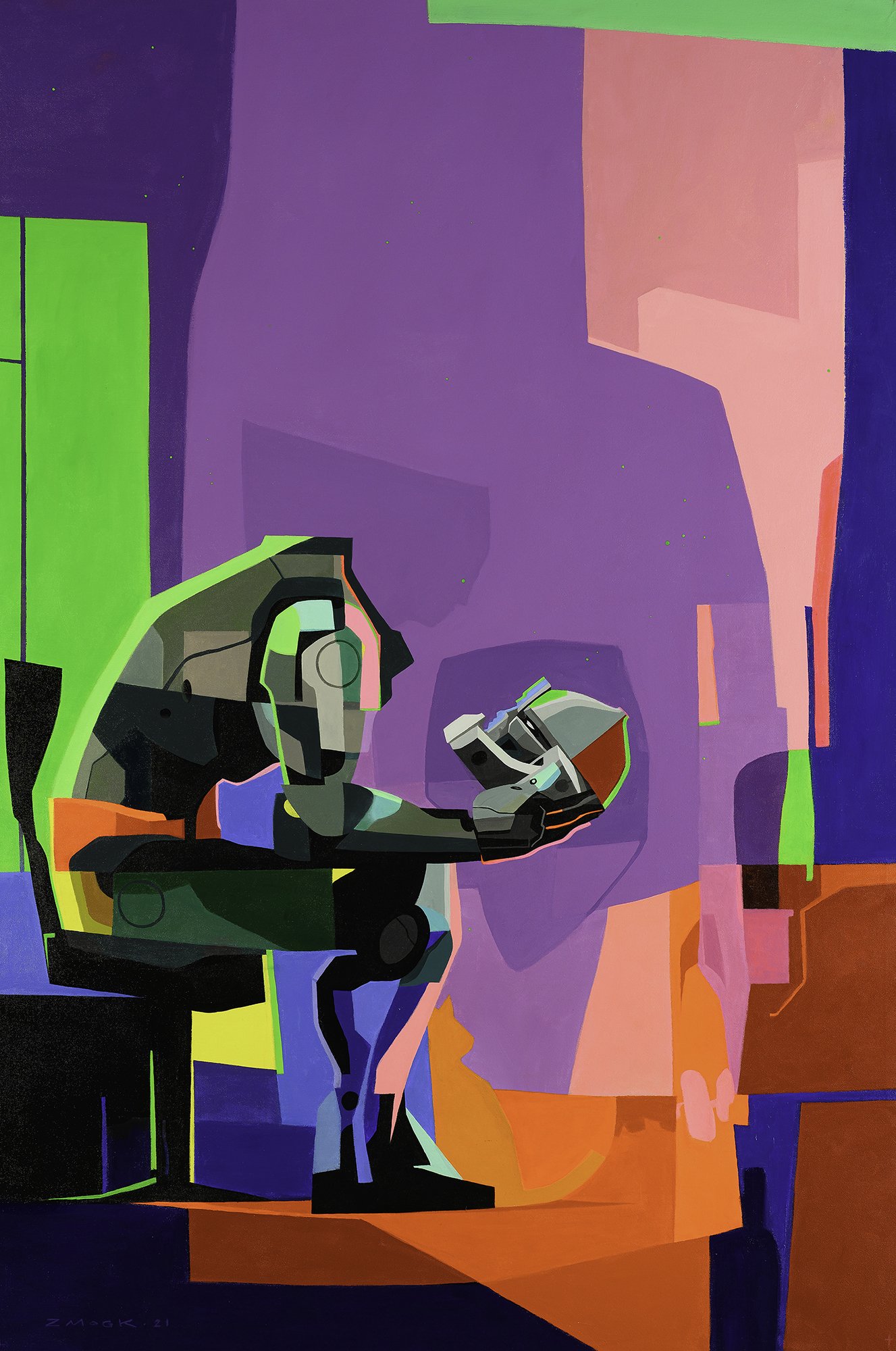«Cogito ergo sum»*
2021
150 х 100 х 4 cm
Acrylic on canvas
* "I think, therefore I am", Latin, from the French Je pense, donc je sui, “Discourse on the Method” by René Descartes, 1637.
As an artist, I sometimes ask myself, what will happen to my works when I am gone. As a human being, I often wonder whether I would like to live a few centuries long, or long enough to consider myself immortal.
Through my art, I strive to comprehend the world I live in, its reality, and my place in it. I try to make a difference with my works.
What awaits us in the era when technologies, cybernisation and genetic engineering allow humans to live for up to several centuries, or forever? I am convinced that it is only a matter of time before humankind evolves to this point. What will life be then, what will society look like? How will the people’s relationships change, and how will each individual evolve? Will they evolve at all?
In this painting, I raise the question of immortality in the distant future, when humankind has long passed the point of technological singularity, and the line between the artificial and the natural has been blurred or erased. I refer to the iconic 1995 anime “Ghost in a Shell”, its philosophy and the questions it raises. What is self-awareness and by which criteria can one recognise it in a being? Where lies the line between the artificial and the natural?
The painting shows a sitting cyborg constructed of nearly indestructible elements, visibly tired (not in the physical sense, obviously). Behind them is a window (the green light resembles the bright neon-lit screens outside, or it can represent the overall info-space). Particles of dust are floating in the air – or could those be nano-robots? The cyborg is deep in thought, holding their head in their hand. Where one would expect to find the head, there is a barely visible ghostly silhouette. What we see is a ghost in a mechanical shell, one of the pieces of dust forming its eye. The head and the ghost are silently gazing at one another, contemplating immortality and each other's realness.
The background of the painting forms the shape of a skull (the central and the bottom-right parts, the eye socket behind the head, etc.). It is a symbol of death that is never truly gone, even in the time when humanity has reached immortality and any encounter with Death is voluntary.
The posture of the cyborg resembles the Rodin’s ‘Thinker’, the image of a reflective, creative being, and here I raise the question of the creator, whether it is God, Universe, the Human, or Artificial Intelligence. The similar posture and the head resting on the palm may as well remind of Hamlet’s monologue and its questions of being, the meaning of life and the reality of death:
To be, or not to be: that is the question:
Whether 'tis nobler in the mind to suffer
The slings and arrows of outrageous fortune,
Or to take arms against a sea of troubles,
And by opposing end them? To die: to sleep;
No more; and by a sleep to say we end
The heart-ache and the thousand natural shocks
That flesh is heir to, 'tis a consummation
Devoutly to be wish'd. To die, to sleep;
To sleep: perchance to dream: ay, there's the rub;
For in that sleep of death what dreams may come
When we have shuffled off this mortal coil,
Must give us pause: there's the respect
That makes calamity of so long life;
For who would bear the whips and scorns of time,
The oppressor's wrong, the proud man's contumely,
The pangs of despised love, the law's delay,
The insolence of office and the spurns
That patient merit of the unworthy takes,
When he himself might his quietus make
With a bare bodkin? who would fardels bear,
To grunt and sweat under a weary life,
But that the dread of something after death,
The undiscover'd country from whose bourn
No traveller returns, puzzles the will
And makes us rather bear those ills we have
Than fly to others that we know not of?
Thus conscience does make cowards of us all;
And thus the native hue of resolution
Is sicklied o'er with the pale cast of thought,
And enterprises of great pith and moment
With this regard their currents turn awry,
And lose the name of action.—Soft you now!
The fair Ophelia! Nymph, in thy orisons
Be all my sins remember'd.




